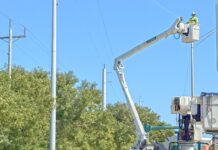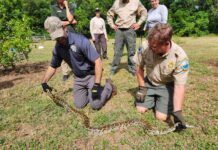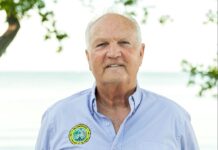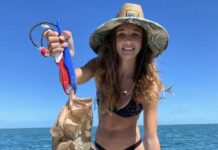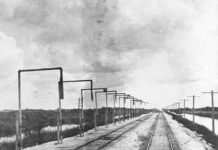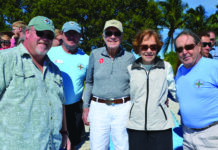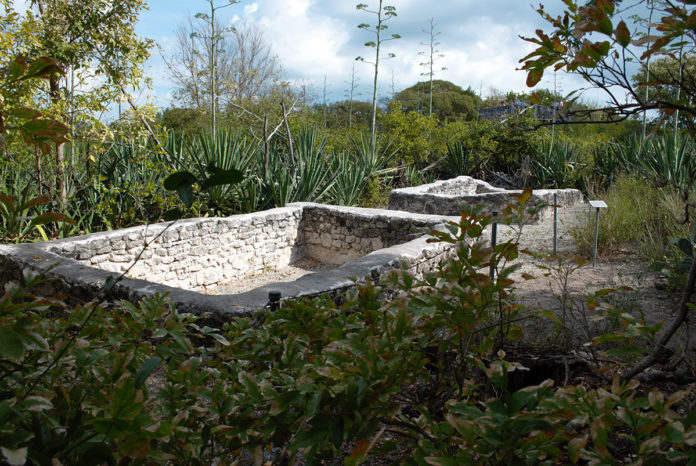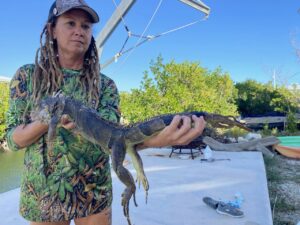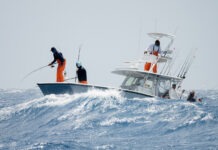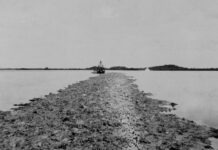Editor’s Note: This is the final installment in a four-part series on the attack at Indian Key.
In the days after the 1840 attack at Indian Key, Jacob Housman signed his rights to the island over to the U.S. government.
The document read, in part: “This instrument testifies an agreement between the undersigned contracting parties, the first named John T. McLaughlin in the behalf of United States, and the second Jacob Housman of Indian Key. Jacob Housman of Indian Key, yields all right and claim to his property and possessions on Indian Key to John T. McLaughlin for the United States, to be used as a military outpost during the continuance of the Florida War, or for as long a period as the government of the United States may think proper to occupy it during the war, reserving to himself for his personal uses only that portion to be by him enclosed which shall be hereafter defined by the constructing parties. Signed this 9th day of August, 1840 at Indian Key. John T. McLaughlin Lt. Comdt. Flirt; Jacob Housman”
Two days later, McLaughlin informed the Secretary of the Navy, John Paulding, that he would be moving the Navy depot formerly established at Tea Table Key to the more favorable locale at Indian Key. Among the reasons presented to Paulding, namesake of the depot known as Fort Paulding, was the presence of superior wharves, storage facilities and fresh water (likely referencing cisterns that had already been established on the island).
In the wake of the attack, a handful of people remained on the island. They included Jacob Housman and his wife, the Goodyears, and the Charles Howe family. None of them would stay for an extended period. In a letter to his brother-in-law in Pensacola dated Nov. 8, 1840, just three months after the attack, Charles Howe wrote: “We are now the only family remaining on this island, & your sister the only woman nearer than Key West – Capt. H. has cleared out for good – took everything he had left, to Key West, about a fortnight since, to sell at Auction – his Negros – Boats vessels & I think I see his object, he is as usual very schemy, he is a good deal in debt & it was thought before the invasion, that he could not stand it more than a year or two longer – had mortgaged all his property on this island, to two different persons in Charleston, to the amt – of about $16,000 – they were sent to me to have them executed & I could not but feel sorry for the man, notwithstanding his unprincipled disposition – I never mentioned it to anyone, and I believe but one or two besides the clerk of the Co. Court knew of it he cannot now pay 10 per cent – and I doubt if he is ever able – he will pay more – Mr Goodyear who has been clerk to Capt – H – for sometime past, kept open a small store, or Grog Shop, on the wharf ever since the destruction of the island, and was surprised when Capt. H. came & informed him of his determination to take every thing to Key West & Sell out. Mr. G – said he thought he should return & open a store on his own acct – but I have not heard since he left, whether he intends doing so or not…”
Jacob Housman would not remain in Key West long. On April 13, 1841, U.S. Attorney L. W. Smith filed a charge for assault on the high seas, a crime that would be labeled piracy in some courts. Smith charged that two men who had been aboard Housman’s ship at a location identified as Key Rodriguez held Jacob Housman at knifepoint aboard his own ship and deprived him of command. Key Rodriguez, or Rodriguez Key as it is more commonly identified these days, is an island just east of the southern Atlantic area of Key Largo, some 100 miles northeast of Key West. Housman’s wife, Elizabeth, claimed to be a witness to the crime.
It was not the last trouble Housman faced. Eighteen days later, he was killed during a salvage operation. According to his wife, the fatal accident occurred on May 1, 1841. Adding insult to injury, according to court records, Jacob Pierce, master of the ship Leander, filed a claim against Elizabeth Ann Housman, executrix of Jacob Housman, on May 7, 1841, seeking recompense for damages caused to his ship after Housman’s sloop Key West collided with the Leander during the operation. Pierce would be awarded damages in an action dated May 20.
As for announcements regarding the death of Housman, the May 25, 1841 edition of the Charleston Courier stated: “Extracts of letters received in this city by the U.S. Mail packet Wayne. Indian Key, May 15 – . . . Capt. J. Housman of this place died on the 8th inst.; from injury received by the up setting of his boat.”
Some decades later, the Indian River Advocate published these words in the Florida Times-Union dated May 22, 1892: “He was mortally injured by being struck by a heavy piece of timber from a wrecked vessel, while engaged in his favorite pursuit, that of wrecking.”




